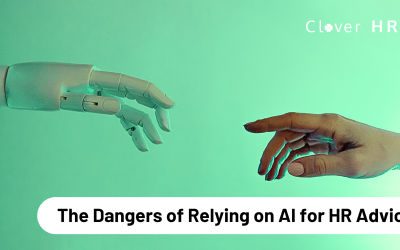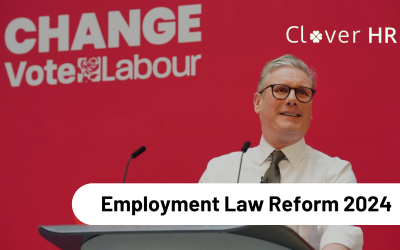Feeling confident, and doing well in an interview starts with preparation…and a great interview outfit that you feel comfortable in. When you receive that exciting invite, take note of the detail, paying particular attention to anything you need to do ready for the interview and what the formality is. Is it going to be a formal interview at the company offices, or is it more of an informal chat over a coffee in a local café? This is important when deciding what to wear and making sure you don’t underdress…or even overdress…
Be sure to fully research the industry in which you are applying for the typical dress code expectations, as well as getting to know the company as best you can – you’ll want to impress, whilst looking like you’ll fit right in. You can still inject aspects of your personality and own personal style too.
Nailing some answers to typical interview questions, as well as recalling some specific examples of your best work can really help you feel confident going in. Make some notes as a prompt in case your mind goes blank – it happens to us all – and talk in your own words, rather than memorising stock answers you’ve found online.
What to wear
The following items of clothing are suitable in most interview situations:
- A suit in either dark or neutral colours
- Light coloured shirts/blouses
- A dress in either dark/neutral colours
- A skirt below the knee in either dark or neutral colours
- Smart tapered trousers in either dark or neutral colours
- Natural coloured tights for your skin tone
- Either smart, flat shoes, or smart shoes with a small block heel
- A smart blazer
- A fitted cardigan
- Fitted coat or jacket if needed
A couple of outfit suggestions could be:
- A smart dress paired with block heel shoes. Add a fitted jacket/blazer and smart neck scarf to give a pop of colour/pattern and personality.
- Smart, tapered trousers with a light-coloured smart blouse/shirt. Add a blazer for layering and some smart flat shoes.
Below are some suggestions for industry-specific dress:
| Industry | Typical dress code |
| Finance, Law and very corporate environments | Go for professional business attire, such as a full suit
|
| Government, Sales, Hospitality and Management | Business attire such as a smart shirt or blouse, smart trousers or skirt, or a smart dress works well for these roles. Include a blazer for layering |
| Technology, Creative, Construction, Factory and Engineering | Generally, more casual here. Dark tailored jeans or trousers and a professional top would work well. A smart-casual blazer or fitted cardigan would be good for layering |
Top Tips for dressing for an interview:
- Assess the interview formality
- Research the industry and company culture
- Iron out any creases and polish shoes
- Keep it cohesive
- Minimise accessories – stick to a coordinating handbag and a smart scarf, if needed
- Keep jewellery simple and smart – small stud earrings, 1 or 2 rings and a small necklace is enough
- Ensure good hygiene and grooming – not too heavy on the perfume (it can be off-putting)
- Wear clothes that fit well
- Cover up tattoos and piercings
- Keep it simple if you’re unsure
Assessing the interview formality and researching industry/company culture shows that you’re keen to fit in. Once you have selected your outfit of choice based on your research, taking the time to iron it, making sure it fits well, and taking care of your personal hygiene/grooming, shows that you care about how you present your own personal brand – that will hopefully be a good indication to the interviewer that you would present the brand of the company with the same level of care too.
Covering up tattoos and piercings when you wouldn’t in any other situation can feel strange – they certainly shouldn’t be discriminated against; however, they may be distracting in an interview, and you want the interviewer to be focused on the conversation. The same goes for wearing loads of different colours/patterns and going heavy on the accessories – 2-3 colours is great.
Hair and makeup
Hairstyles for interviews should be kept neat and tidy and a classic up or down look works well. Choose a style that isn’t too fussy as this could lead to you playing with your hair or feeling uncomfortable. If you can, a fresh trim is an added bonus.
If you choose to wear makeup to your interview take care not to overdo it. Here are some tips to achieving a great look –
- Moisturise ahead of applying your make-up to keep it even, and smooth any dry patches
- Stick to neutral colours that compliment your skin tone
- Emphasise your eyebrows but keep them looking natural
- Using a subtle eyeliner can help emphasise your eyes
- Avoid using false eyelashes as they may irritate you on the day – a good mascara can be just as effective
- Avoid dark lips
- Pop some touch-up supplies in your bag
- Most of all, stick to what you know and what you feel comfortable with
Interview questions
There are some common interview questions that it would be good to prepare for ahead of your interview. Remember, be sure to come up with your own words, rather than memorising answers you’ve found online. Think about questions such as:
- Tell us about yourself
- What do you know about the organisation and why do you want to work here?
- What skills do you bring to the role?
- What do you think are the key skills needed to make you successful in the role?
- What are your strengths and areas of development? – always provide some areas of development – interviewers don’t expect anyone to be perfect
- What would you do in the first month of the role?
There may also be some situational and technical questions specific to the role you’re applying for, so it would be useful to consider some examples of how these could be answered. A useful way to structure your answers is by using the STAR method – what was the Situation, what was the Task you needed to achieve, what Action did you take and what were the Results.
Prepare some questions for the interviewer too – this shows you’re interested and keen to learn as much as possible about the role/company.
Dressing in something that makes you feel great and preparing for an interview in the best way possible really helps to boost your confidence – now all that’s left to do is go in there and smash it!


